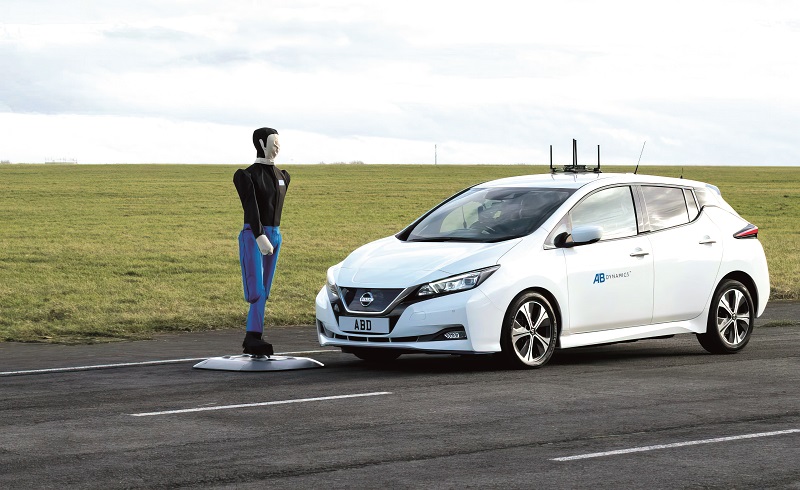Real-world test model

AB Dynamics (ABD) has developed a pedestrian modelling system to improve the effectiveness of sensors in autonomous vehicles (writes Nick Flaherty).
ABD worked with Dynamic Research on the ‘Soft Pedestrian 360’ system to support tests for improved sensor perception and categorisation.
The system is a real-world model with articulation of the knees, hips, shoulders and neck to more accurately reflect a pedestrian in a sensor output. Actively articulated knees enable the hips and knees to move independently of each other so that the gait of the model can be controlled in different ways with a more varied range of movement. This is critical for vehicle sensor systems to ensure the correct categorisation of a moving pedestrian.
The gait of the model is automatically synchronised with the position, speed and acceleration of the target relative to a starting point using the platform’s IMU. This prevents a phenomenon the developers call ‘Flintstoning’, where the foot in the stance portion of the gait is not stationary relative to the ground, and results in better characterisation.
The limbs, head and mounting pole are attached to the torso via foam blocks that engage corresponding sockets in the torso, such that when these components separate on impact with a test vehicle there are no exposed hard points. The servos operating the limbs and head of the pedestrian are also completely encased in foam and sit within each component. They use a newly designed slipper clutch to prevent them from being back-driven during a collision.
All these factors mean the vehicle under test is protected when the limbs are disconnected upon impact.
UPCOMING EVENTS
























